Moon, star and planets -> agriculture
Agriculture
Agriculture is the science, art, and business of cultivating soil, producing crops, and raising livestock. It plays a crucial role in providing food, fiber, and other materials for human survival and economic development.
Types of Agriculture
There are various types of agriculture, including:
- Subsistence Agriculture: Small-scale farming primarily for family consumption.
- Commercial Agriculture: Large-scale farming for profit and trade.
- Organic Agriculture: Farming without the use of synthetic fertilizers and pesticides.
- Intensive Agriculture: High-input farming with a focus on maximizing yield.
- Extensive Agriculture: Low-input farming with large land areas and lower yields per acre.
Key Elements of Agriculture
Key elements of agriculture include:
- Crop Production: Cultivating and harvesting plants for food, feed, fiber, and other uses.
- Livestock Rearing: Raising animals for meat, milk, wool, and other products.
- Soil Management: Practices to maintain soil fertility and structure for crop growth.
- Irrigation: Providing water to crops through artificial means to supplement natural rainfall.
- Agricultural Machinery: Use of equipment and machinery for planting, harvesting, and processing crops.
Importance of Agriculture
Agriculture is essential for:
- Providing food and nutrition for human populations.
- Generating income and employment in rural areas.
- Supplying raw materials for various industries, such as textiles and biofuels.
- Preserving biodiversity and natural ecosystems through sustainable farming practices.
Study Guide for Agriculture
To study agriculture effectively, consider the following topics:
- Basic principles of crop production and management.
- Types of agricultural practices and their impact on the environment.
- Importance of sustainable farming methods and conservation of natural resources.
- Role of technology and innovation in modern agriculture.
- Economic and social aspects of agriculture, including global food security issues.
Understanding these key aspects will provide a solid foundation for learning about the science and practice of agriculture.
.◂Science Worksheets and Study Guides Second Grade. Moon, star and planets
Study Guide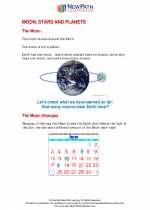 Moon, star and planets
Moon, star and planets  Activity Lesson
Activity Lesson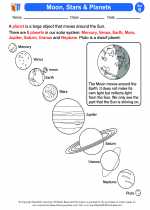 Moon, Stars & Planets
Moon, Stars & Planets  Worksheet/Answer key
Worksheet/Answer key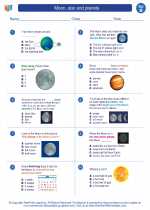 Moon, star and planets
Moon, star and planets  Worksheet/Answer key
Worksheet/Answer key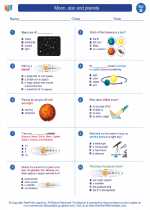 Moon, star and planets
Moon, star and planets  Worksheet/Answer key
Worksheet/Answer key Moon, star and planets
Moon, star and planets  Vocabulary/Answer key
Vocabulary/Answer key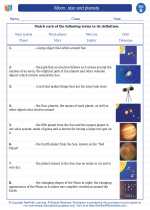 Moon, star and planets
Moon, star and planets  Vocabulary/Answer key
Vocabulary/Answer key Moon, star and planets
Moon, star and planets 

 Activity Lesson
Activity Lesson
 Worksheet/Answer key
Worksheet/Answer key
 Worksheet/Answer key
Worksheet/Answer key
 Worksheet/Answer key
Worksheet/Answer key
 Vocabulary/Answer key
Vocabulary/Answer key
 Vocabulary/Answer key
Vocabulary/Answer key

The resources above cover the following skills:
Second Grade: Focus on Systems and System Models; Energy and Matter
Earth and Space Sciences: Students develop an understanding of the distribution and role of water and wind in weather, shaping the land, and where organisms live. Wind and water can also change environments, and students learn humans and other organisms can change environments too. Students develop an understanding of changing patterns in the sky including the position of Sun, Moon, and stars, and the apparent shape of the Moon.
Earth and Space Standards
Observe and explain the Sun’s position at different times during a twenty-four-hour period and changes in the apparent shape of the Moon from one night to another.